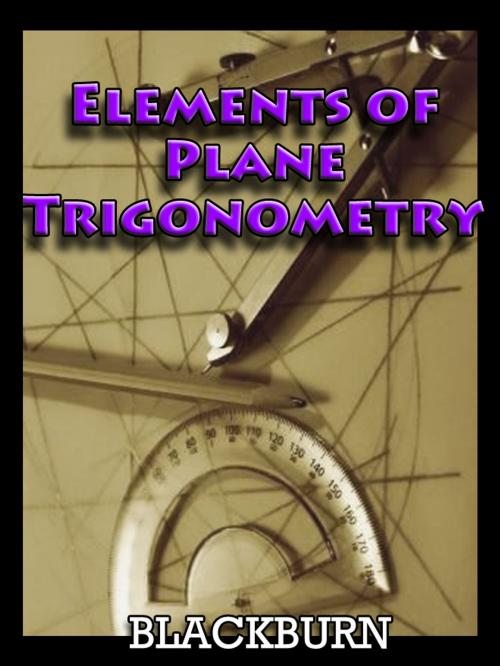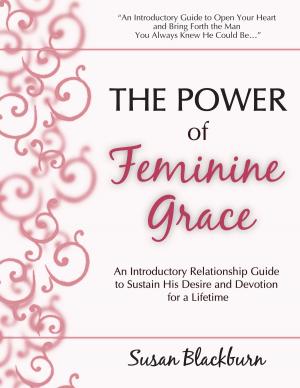Elements of Plane Trigonometry
Nonfiction, Science & Nature, Mathematics, Pre-Calculus, Trigonometry, Calculus| Author: | Hugh Blackburn | ISBN: | 1230000137275 |
| Publisher: | Blackburn | Publication: | May 31, 2013 |
| Imprint: | Language: | English |
| Author: | Hugh Blackburn |
| ISBN: | 1230000137275 |
| Publisher: | Blackburn |
| Publication: | May 31, 2013 |
| Imprint: | |
| Language: | English |
Elements of Plane Trigonometry by Hugh Blackburn, M.A.
Some apology is required for adding another to the long list of books on Trigonometry. My excuse is that during twenty years' experience I have not found any published book exactly suiting the wants of my Students. In conducting a Junior Class by regular progressive steps from Euclid and Elementary Algebra to Trigonometry, I have had to fill up by oral instruction the gap between the Sixth Book of Euclid and the circular measurement of Angles; which is not satisfactorily bridged by the propositions of Euclid's Tenth and Twelfth Books usually supposed to be learned; nor yet by demonstrations in the modern books on Trigonometry, seemed to me defective for modern requirements, as not sufficiently connected with Analytical Trigonometry.
What I felt the want of was a short Treatise, to be used as a Text Book after the Sixth Book of Euclid had been learned and some knowledge of Algebra acquired, which should contain satisfactory demonstrations of the propositions to be used in teaching Junior Students the Solution of Triangles, and should at the same time lay a solid foundation for the study of Analytical Trigonometry.
This want I have attempted to supply by applying, in the First Chapter, Newton's Method of Limits to the mensuration of circular arcs and areas; choosing that method both because it is the strictest and the easiest, and because I think the Mathematical Student should be early introduced to the method.
The succeeding Chapters are devoted to an exposition of the nature of the Trigonometrical ratios, and to the demonstration by geometrical constructions of the principal propositions required for the Solution of Triangles. To these I have added a general explanation of the applications of these propositions in Trigonometrical Surveying: and I have concluded with a proof of the formula for the sine and cosine of the sum of two angles treated (as it seems to me they should be) as examples of the Elementary Theory of Projection.
Having learned thus much the Student has gained knowledge of Trigonometry as originally understood, and may apply his knowledge in Surveying; and he has also reached a point from which he may advance into Analytical Trigonometry and its use in Natural Philosophy.
Thinking that others may have felt the same want as me, I have published the Tract instead of merely printing it for the use of my Class.
H. B.
Content
CHAPTER I - OF THE MENSURATION OF THE CIRCLE.
CHAPTER II - OF THE AREA OF A TRIANGLE AND OF THE INSCRIBED CIRCLE.
CHAPTER III - OF SYMBOLS OF QUANTITY
CHAPTER IV - OF THE UNIT OF ANGULAR MAGNITUDE
CHAPTER V - CIRCULAR FUNCTIONS, OR TRIGONOMETRICAL RATIOS.
CHAPTER VI - OF LOGARITHMIC TABLES.
CHAPTER VII - SOLUTION OF TRIANGLES.
CHAPTER VIII - OF TRIGONOMETRICAL SURVEYING
CHAPTER IX - OF PROJECTIONS.
CHAPTER X - THE SINE AND COSINE OF THE SUM AND DIFFERENCE OF TWO
ANGLES.
Elements of Plane Trigonometry by Hugh Blackburn, M.A.
Some apology is required for adding another to the long list of books on Trigonometry. My excuse is that during twenty years' experience I have not found any published book exactly suiting the wants of my Students. In conducting a Junior Class by regular progressive steps from Euclid and Elementary Algebra to Trigonometry, I have had to fill up by oral instruction the gap between the Sixth Book of Euclid and the circular measurement of Angles; which is not satisfactorily bridged by the propositions of Euclid's Tenth and Twelfth Books usually supposed to be learned; nor yet by demonstrations in the modern books on Trigonometry, seemed to me defective for modern requirements, as not sufficiently connected with Analytical Trigonometry.
What I felt the want of was a short Treatise, to be used as a Text Book after the Sixth Book of Euclid had been learned and some knowledge of Algebra acquired, which should contain satisfactory demonstrations of the propositions to be used in teaching Junior Students the Solution of Triangles, and should at the same time lay a solid foundation for the study of Analytical Trigonometry.
This want I have attempted to supply by applying, in the First Chapter, Newton's Method of Limits to the mensuration of circular arcs and areas; choosing that method both because it is the strictest and the easiest, and because I think the Mathematical Student should be early introduced to the method.
The succeeding Chapters are devoted to an exposition of the nature of the Trigonometrical ratios, and to the demonstration by geometrical constructions of the principal propositions required for the Solution of Triangles. To these I have added a general explanation of the applications of these propositions in Trigonometrical Surveying: and I have concluded with a proof of the formula for the sine and cosine of the sum of two angles treated (as it seems to me they should be) as examples of the Elementary Theory of Projection.
Having learned thus much the Student has gained knowledge of Trigonometry as originally understood, and may apply his knowledge in Surveying; and he has also reached a point from which he may advance into Analytical Trigonometry and its use in Natural Philosophy.
Thinking that others may have felt the same want as me, I have published the Tract instead of merely printing it for the use of my Class.
H. B.
Content
CHAPTER I - OF THE MENSURATION OF THE CIRCLE.
CHAPTER II - OF THE AREA OF A TRIANGLE AND OF THE INSCRIBED CIRCLE.
CHAPTER III - OF SYMBOLS OF QUANTITY
CHAPTER IV - OF THE UNIT OF ANGULAR MAGNITUDE
CHAPTER V - CIRCULAR FUNCTIONS, OR TRIGONOMETRICAL RATIOS.
CHAPTER VI - OF LOGARITHMIC TABLES.
CHAPTER VII - SOLUTION OF TRIANGLES.
CHAPTER VIII - OF TRIGONOMETRICAL SURVEYING
CHAPTER IX - OF PROJECTIONS.
CHAPTER X - THE SINE AND COSINE OF THE SUM AND DIFFERENCE OF TWO
ANGLES.















